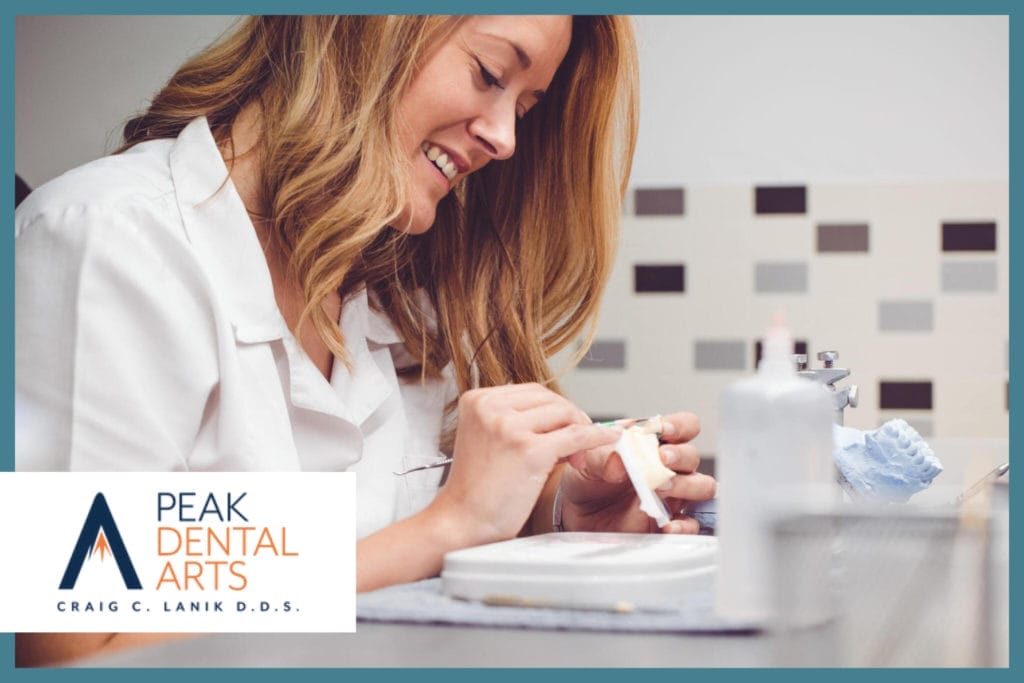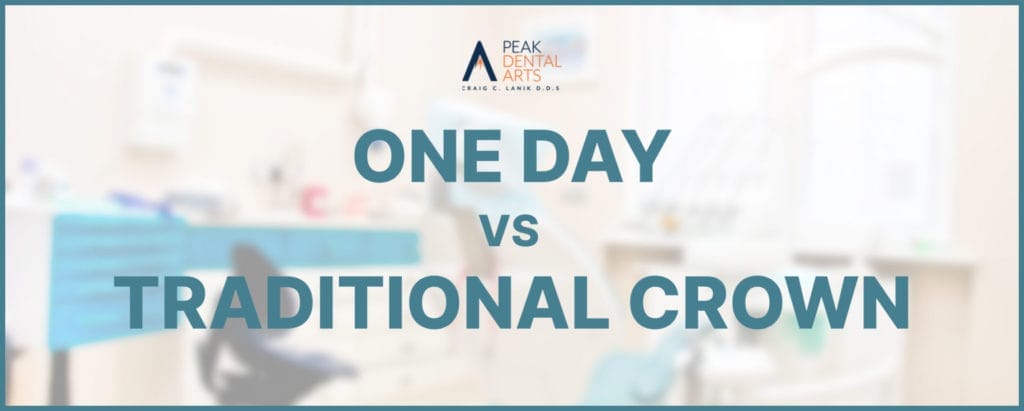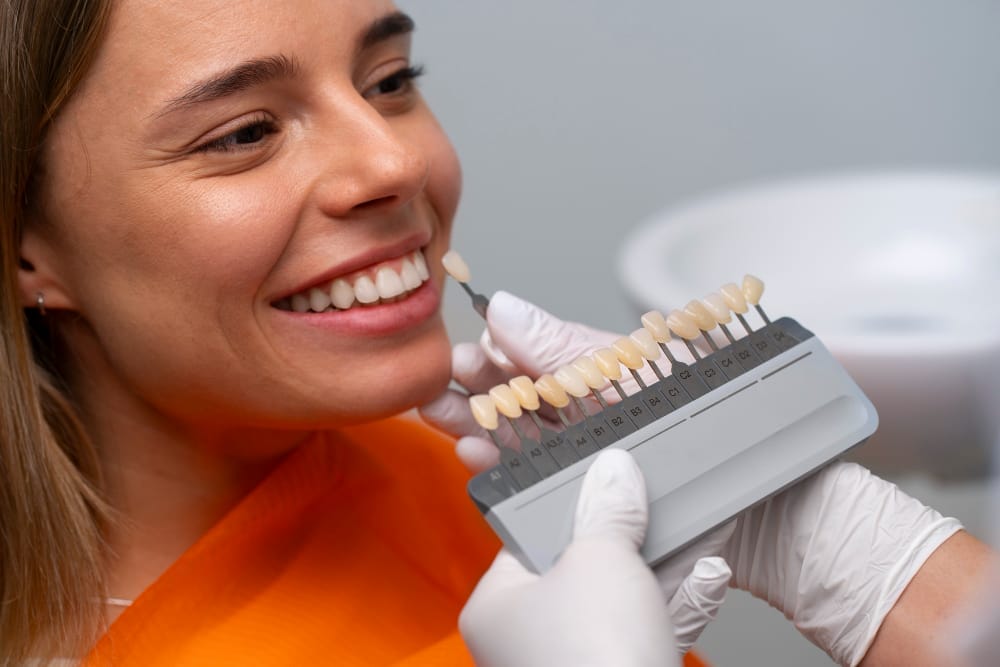In the world of dental health, the debate between one-day crowns and traditional crowns is pivotal, shaping decisions for patients and dentists alike. When it comes to choosing the right type of crown for your dental needs, understanding the key differences and benefits of each option is crucial.
While one-day crowns offer a quick and convenient solution, traditional crowns are known for their durability and long-standing success in dental restoration.
Continue reading to learn which one is best for you.
Understanding One-Day Crowns
CEREC® One-Day Crowns are a modern dental restoration solution crafted using cutting-edge CAD/CAM (computer-aided design and manufacturing) technology right in the dentist’s office. This process involves capturing the tooth’s shape with a digital scanner, eliminating the need for traditional putty impressions.
The crown is designed using CAD software to perfectly match your tooth’s shape and bite. A CAM system quickly mills the crown from ceramic or composite resin, ensuring a color match with your teeth.
These crowns are typically made from durable ceramic or composite resin, chosen for both aesthetic and functional qualities.
Advantages of Same-Day Crowns
Key benefits include:
- Efficiency: The entire process, from design to fitting, is completed in one visit.
- Custom Fit: Advanced technology ensures a crown that fits well and looks natural.
- Comfort: Fewer appointments and no temporary crowns mean less discomfort and inconvenience.
Potential Drawbacks
Considerations include:
- Durability: They may not be as strong as traditional crowns, particularly for teeth that bear more force.
- Complex Cases: Traditional crowns might be preferable for complex dental issues due to their custom lab crafting.

Exploring Traditional Crowns
Traditional crowns have been a cornerstone in dental restoration for years, offering a time-tested solution with a multi-step process.
First, the dentist reshapes your tooth and takes an impression, ensuring the crown will fit seamlessly. The impression is sent to a lab where your crown is meticulously crafted.
A temporary crown protects your tooth while the permanent one is being made.
Once ready, the dentist fits and adjusts the permanent crown, ensuring comfort and a natural look.
Materials for traditional crowns vary, including porcelain, metal, and ceramic, each selected for durability, appearance, and compatibility with your natural teeth.
Benefits of Traditional Crowns
Traditional crowns are favored for several reasons:
- Longevity and Durability: Crafted from robust materials, these crowns are built to last and withstand daily wear and tear.
- Proven Track Record: Decades of successful use have established traditional crowns as a reliable choice for dental restoration.
Considerations and Downsides
There are downsides to consider, including:
- Time Investment: The process requires multiple visits over a few weeks.
- Temporary Sensitivity: The period with a temporary crown can involve some discomfort or sensitivity.

Comparing One Day and Traditional Crowns: Cost Considerations
When weighing the options between one day and traditional crowns, understanding the cost implications is crucial for making an informed decision.
Cost Comparison
The cost of CEREC® crowns and traditional crowns varies, and several factors influence the final price:
- CEREC® Crowns: A CEREC® crown can range from $300 to $1,500, with the average cost around $1,200. This variation largely depends on geographic location, the dentist’s expertise, and specific patient needs.
- Traditional Crowns: Traditional crowns typically cost between $800 and $2,000. The price is influenced by the materials used (such as gold, silver, or porcelain fused to metal), the complexity of the procedure, and other related dental services.
Insurance Considerations
Insurance coverage for dental crowns can vary significantly. Some insurance plans may cover a portion of the cost for either type of crown, but the extent of coverage can differ based on the policy.
It’s important to consult with your insurance provider to understand what portion of the crown cost will be your responsibility.
Long-Term Investment
Traditional crowns are known for their longevity, which might offset their higher initial cost over time.
The higher initial cost of CEREC crowns can be balanced by their convenience and time-saving benefits, potentially reducing the number of dental visits and associated costs.
Determining the Best Choice for You
In choosing between same-day and traditional crowns, it’s essential to consider your unique dental needs and preferences. For expert guidance tailored to your situation, Dr. Craig C. Lanik of Peak Dental Arts is an invaluable resource. With his expertise, you can navigate these options confidently.
Contact Dr. Lanik and the team at Peak Dental Arts for a personalized consultation, and take a step toward the best dental solution for you. Your ideal smile is just an appointment away.

